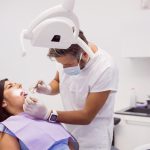Steroid Injections
Steroid injections act to relieve inflammation in and around joints. By reducing inflammation, they can help reduce pain and increase mobility in the affected joint or tendon. Corticosteroids (as used in medical practice) are very different to anabolic steroids used by body builders, and will not have the same effect on muscle growth.
Steroid injections may also be called cortisone injections, hydrocortisone injections, steroid joint injections, corticosteroid injection, intra- articular injections or extra- articular injections.
Steroid injections are useful in the treatment of
- Osteoarthritis
- Bursitis
- Tendinopathies (inflammation and pain from the tendon) such as tennis or golfer’s elbow, rotator cuff problems
- Carpal tunnel syndrome
- Trigger finger or thumb
- Shoulder problems such as impingement, rotator cuff sprains, frozen shoulder
- Shoulder problems such as impingement, rotator cuff sprains, frozen shoulder
- Plantar fasciitis
- Bursitis
Areas We can offer injections
- Shoulders
- Elbows
- Fingers & thumbs
- Carpal tunnel
- Wrists
- Hips
- Knees
- Plantar fasciitis
Risks of steroid injections include:
- Pain: Up to 10% of patients can experience a flare of pain lasting 2-5 days following injection. This is known a steroid flare, and will self-resolve. This can typically be managed with rest and cold compress.
- Nerve injury & worsening of symptoms: This is typically only in the short term, but can lead to a sustained increase in symptoms. This risk remains less than 0.1%.
- Infection: As with any surgical or medical intervention, there is an increased risk of infection. There is thought to be around a 0.005%- 0.0002% increased likelihood of septic arthritis. Signs of septic arthritis include a fever, increasingly swollen hot joint and increasing pain. If you find this you should speak to your GP or out of hours clinician for assessment without delay.
- Atrophy (causing dimples) or hypopigmentation: This is at site of injection, and can come on in the days or weeks following injection. Although the frequency of occurrences following joint injections is unclear, this is thought to occur in around 0.5% of all cases, and usually spontaneously resolves within one year.
- Tendon rupture: is a rare but serious complication. It is to reduce this risk that rest for at least 5-7 days following the procedure is strongly advised, and gradual return to any heavy joint loading following injection.
- Extra consideration with diabetic patients: Diabetics may notice a transient rise in their blood glucose in the days following injection and so may need to monitor their levels closely.
- Extra consideration for those that monitor their blood pressure: Patients may notice a transient rise in their blood pressure in the days following injection.
- Failure to work: This is always a possibility with any medical or surgical intervention. While good results are seen, the pains may not resolve, or may return.
- Risk of bleeding: Bleeding from the injection site would be stopped before leaving the clinic, but any further bleeding should be stopped with firm pressure for a minute or two and a simple plaster. Haemoarthrosis (bleeding into joint) is found in up to 0.15% of those on blood thinning medication. This risk is lower in patients not taking blood thinning medications.
- Other potential complications: These include feeling flush or faint, allergic reaction, menstrual irregularity, vascular damage, and a small risk of temporary immunosuppression reducing the immune response against virus or bacteria.
What our clients say
Thank you very much for giving me the steroid injection in my shoulder, it has eased the pain 40%, and made my life back to normal.
Dear Jon,
You gave me a steroid jab in my right hand, and I'm delighted to sat it has worked its wonderful magic. Thank you very much.
Jon was brilliant. He had time for me and answered all of my questions and communicated information really well. I feel very reassured after being so worried. Very much appreciate his time.
Many thanks for your kindness and support.
You were really good, attentive and informative.
All good now. Thanks Jon
Life changing
The reduction in pain and increased mobility is very good
At least 85% improvement, they are not waking me in the night with pins & needles anymore










